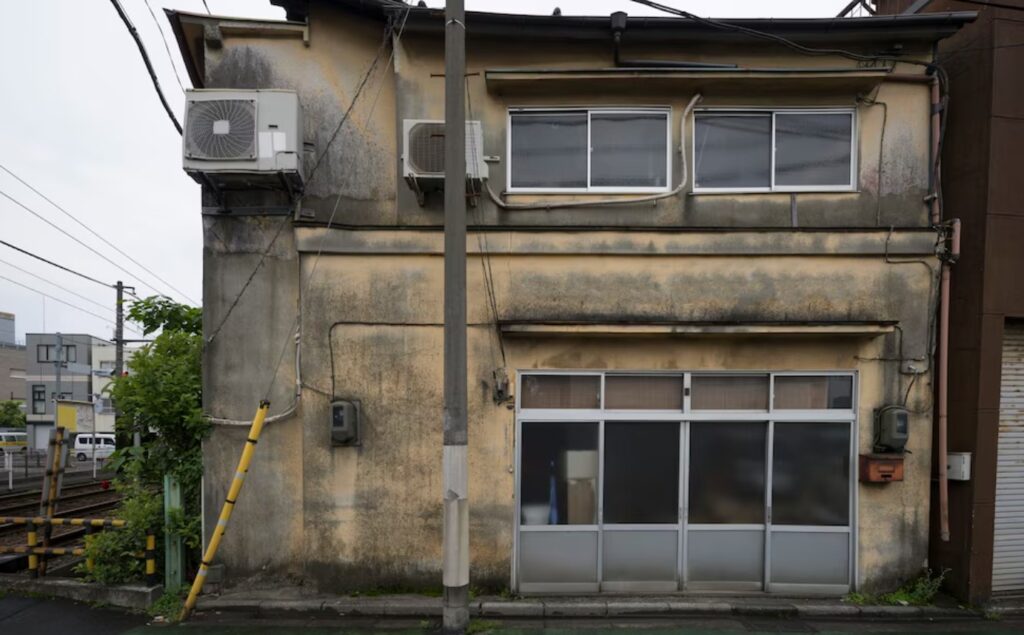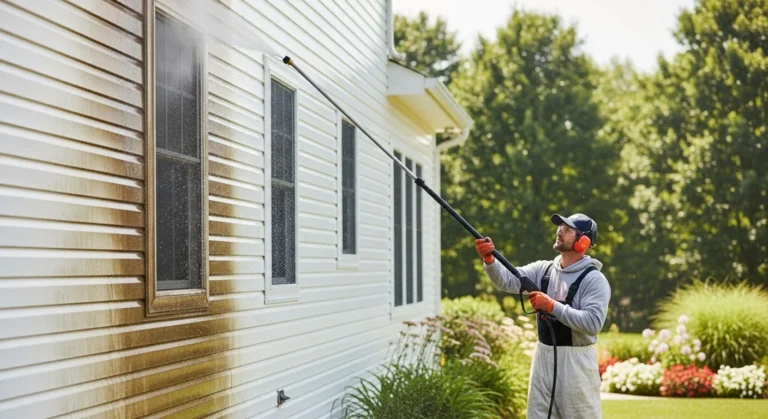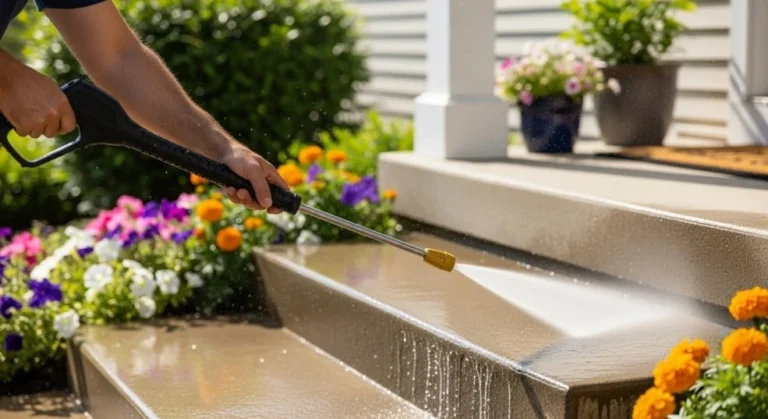A house represents sanctuary, and the exterior always faces outdoor elements. Mold and mildew invade homes for prolonged periods, creating unsightly damage that affects the building structure’s appearance and integrity. Mold and mildew damage your home’s aesthetic and create additional issues that cannot be solved without proper treatment. Buyers must understand mold and mildew detection, prevention measures, and removal techniques because this knowledge maintains the beauty and durability of exterior home design.
The Dangers of Mold and Mildew on Your Home’s Exterior – How to Remove It
This guide details the dangerous nature of mold and mildew on your home’s Exterior and how to Remove It. It also explains the necessary steps for protecting your investment property and methods to prevent health problems from occurring because of nuisance organisms.

What Are Mold and Mildew?
Mold and mildew are fungi that prefer to grow in moist and hot conditions. Although they belong to the same fungi group, mold differs from mildew because each has a unique appearance, characteristics, and effects. Dark green, black, or slimy growth spots of mold appear quickly as they spread across moist surfaces. The lighter substance known as mildew exists as grey or white features with a powdery structure. Mold and mildew have no specific surface preferences for growth, allowing the outdoors of homes to become their primary target.
The development process for these fungi takes longer than a single night. These fungal growths take their time to form because they need shaded environments and restricted ventilation and grow in moist conditions. Siding materials, alongside roofs, decks, and patios, represent high-risk surfaces because they frequently face environmental moisture exposure. Alertness about mold and mildew symptoms allows you to intervene before problems grow more significant.
Why Mold and Mildew Are Dangerous for Your Home
The presence of mold and mildew poses substantial problems because they damage your house structure and present risks to your health. Mold growth deteriorates materials, including wood, concrete, and brick, producing significant repair expenses. The long-term effects of mold exposure lead to shingle deterioration, siding warping, and wooden deck rot.
Mold spores frequently cause respiratory complications for everybody while intensifying symptoms in people with allergies and asthma. Airborne mold spores easily enter indoor air spaces through ventilation entries such as windows, doors, and vents, which increases the danger to household members. The duration that exterior mold-related issues remain untreated in your house will increase spore invasion into your indoor living space.
Causes of Mold and Mildew Growth
Mold and mildew develop mainly because of moisture, yet various conditions can intensify growth. Uncontrolled water drainage and debris-filled gutters generate standing water that penetrates siding materials and foundation structures. The shaded sections near your home are ideal for fungus development because they combine with restricted airflow to create the perfect breeding conditions. Surfaces contaminated by dirt and organic debris serve as fungal nutrients that help spread fungus growth.
Your dwelling’s environmental setting and geographical position substantially affect moisture damage. Residences in humid and coastal areas become highly prone to damage from moisture exposure. Mold and mildew development risks increase when seasonal rainfalls and temperature variations appear. Identifying these risk elements allows you to reduce potential dangers while taking advanced steps to maintain flawless exterior home conditions.
Effective Steps to Remove Mold and Mildew
Complete mold and mildew removal succeeds based on timing and correct elimination methods. First, locate all mold-tainted surfaces because these fungal growths tend to spread beyond what can be manually observed. Prepare protective equipment, including gloves, a mask, and safety goggles, to block mold spores while cleaning.
You should apply a bleach-water mix to clean the affected spots completely. Devote extra attention to the corners and seams since growth accumulation frequently occurs here. When pressure washing, hard-to-remove patches, specifically from siding and concrete surfaces, can be removed. Users must set appropriate machine controls to prevent harm to wood or shingle surfaces.
Conclusion
Mold and mildew problems you overlook will produce serious long-term expenses, affecting your house value and physical well-being. Identifying the origins of mold and mildew allows you to take specific preventive measures that defend your house from destruction, safeguard your family’s health, and enhance its appearance.
It is advantageous to initiate mold or mildew removal from visible exterior areas of your home since delaying this care could lead to more extensive concerns in the future. The methods described in this context allow you to handle this widespread condition while protecting your house’s market value.


